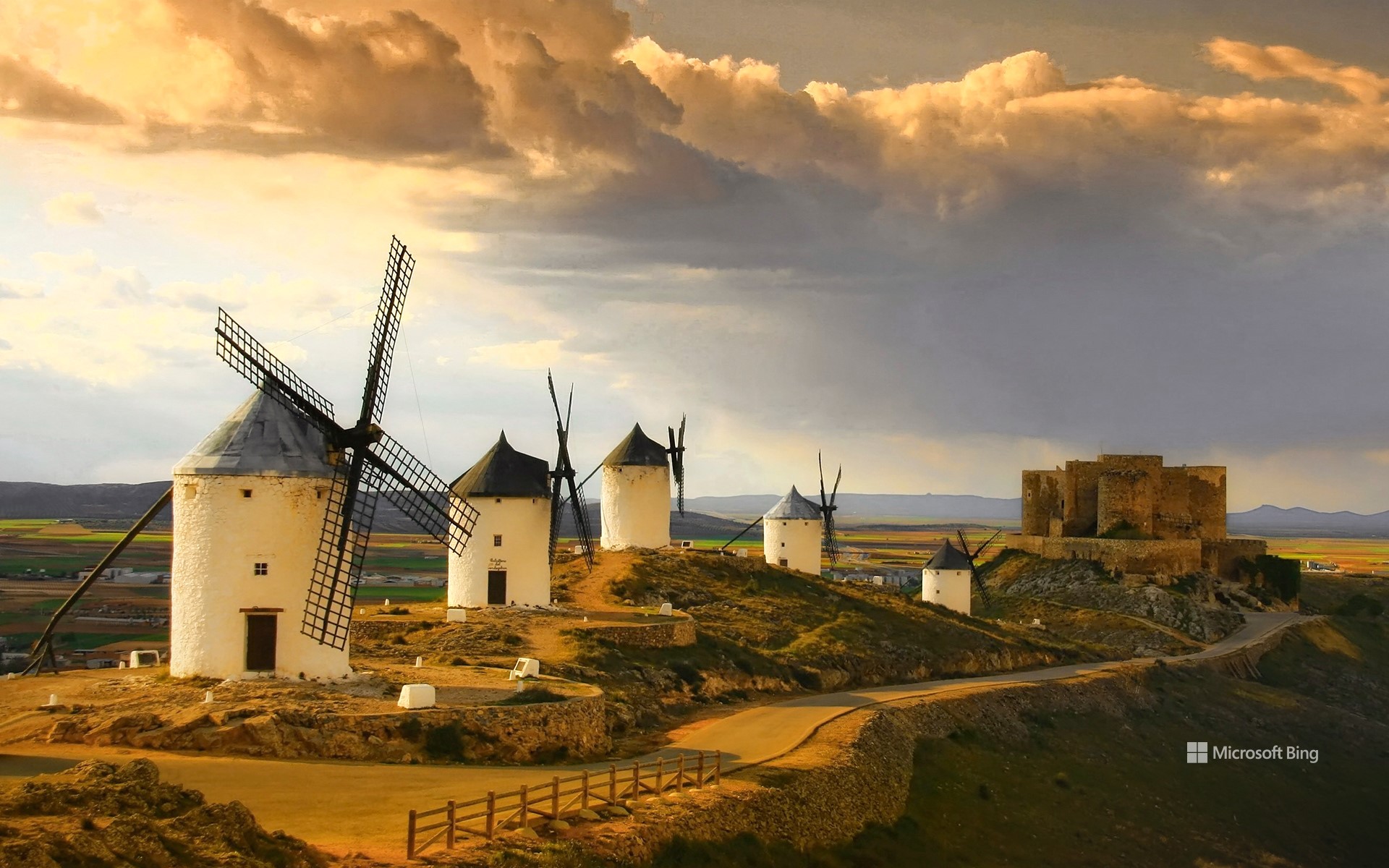卡斯蒂利亚-拉曼恰的风车,西班牙 Windmills in Castilla-La Mancha, Spain (© Getty Images)

卡斯蒂利亚-拉曼恰的风车,西班牙 Windmills in Castilla-La Mancha, Spain (© Getty Images)
西班牙骑士的“劲敌” A Spanish knight's greatest foes
卡斯蒂利亚-拉曼恰, 西班牙
在孔苏埃格拉小镇上,到处都流传着堂吉诃德的冒险故事,他是塞万提斯笔下的英雄,是西班牙史诗小说《堂吉诃德》的主人公。这个位于卡斯蒂利亚-拉曼恰的旅游胜地因一座名为卡尔德里科的小山丘而出名。这座山丘顶部有12座白色风车,或许正是这些风车激发了塞万提斯的灵感。在小说中,塞万提斯将它们描绘成一支巨人军队。风车由石墙和木制叶片构成,其中一些风车的历史可追溯到16世纪,它们曾是碾磨谷物的工具,如今成为见证历史的活化石。
卡斯蒂利亚-拉曼恰是西班牙第三大区,仅次于卡斯蒂利亚-莱昂和安达卢西亚,但与其面积相比,这里的人口相对较少。该地区的首府托莱多拥有重要的建筑和文化遗产,包括古城和托莱多大教堂,1986年,托雷多被联合国教科文组织评为世界文化遗产。因此,如果你有出游计划,不妨去卡斯蒂利亚-拉曼恰,听一听古老风车的低语,感受塞万提斯笔下的自由与勇敢。
Castilla-La Mancha, Spain
In the Spanish town of Consuegra, echoes linger of the adventures of Don Quixote, the hero of Miguel de Cervantes' epic novel. This tourist destination in Castilla-La Mancha is famous for its rocky ridge, known as Cerro Calderico, crowned with 12 white windmills. The windmills are thought to have inspired Cervantes to write the famous scene in which Don Quixote mistakes them for an army of giants. With their stone walls and wooden blades, some date back to the 16th century, when they were built to grind grain.
Castilla-La Mancha is the third-largest region—after Castile y León and Andalusia—in Spain but one of the least densely populated. The regional capital city, Toledo, has a significant architectural and cultural legacy—including Old Town and the Catedral de Toledo—that led to its designation as a UNESCO World Heritage site in 1986. So, for your next quest, let the windmills of Castilla-La Mancha whisper their timeless tales in your ear.
评论已关闭